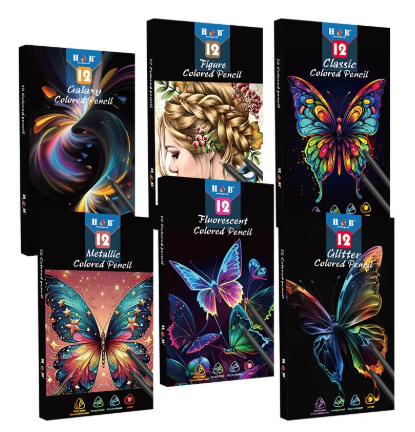The Science of Color: How Paint Influences Creative Thinking
Warm Hues and Their Impact on Focus and Innovation
Warm colors like red, orange, and yellow have a profound impact on our creative thinking processes by invoking energy and enthusiasm. These colors are often associated with vitality and can significantly boost mood and creativity levels. Studies have shown that environments infused with these warm hues can enhance focus, allowing individuals to engage deeply with tasks. For instance, the color red is linked to increased heart rate and stimulation, which, in turn, can lead to heightened alertness and motivation. This, consequently, paves the way for greater innovation and creative output.
The psychological effects of warm colors are rooted in their visibility and how they encourage a proactive mental state. The brightness of these colors ensures that they stand out in our environments, thus capturing our attention and driving us to take action. Moreover, their stimulating properties can create dynamic and energetic atmospheres, ideal for brainstorming sessions or creative workshops. On a practical level, incorporating warm hues into workspaces can lead to a vibrant and stimulating environment that empowers individuals to think outside the box and foster innovative ideas.
Nature-Inspired Greens: Fostering Growth and Open-Mindedness
Nature-inspired greens are known for their calming effect and ability to foster growth and open-mindedness in creative endeavors. Associated with nature, green represents growth and harmony, promoting a balanced mental state conducive to creativity. Research supports this, revealing that exposure to green hues can improve mood and cognitive flexibility. Such cognitive flexibility is vital for creative problem-solving, enabling individuals to approach challenges with fresh perspectives and innovative solutions.
Incorporating nature-inspired colors like green into workspaces can bolster collaborative thinking and support the generation of innovative ideas. By mimicking the calming effects of natural settings, these colors create environments where creativity flourishes. As demonstrated by a study published in the Personality and Social Psychology Bulletin, exposure to green hues before tasks can significantly improve creativity (Lichtenfeld et al.,2012). Thus, choosing green shades that reflect natural landscapes can cultivate a productive and inventive atmosphere, making it ideal for brainstorming and ideation sessions.
Emotional and Cognitive Benefits of Artistic Expression with Paint
Stress Reduction and Mental Clarity Through Painting
Engaging in painting is more than a hobby—it's a powerful therapeutic activity that significantly reduces stress and anxiety. Studies reveal that individuals who regularly indulge in painting not only experience an uplift in mood but also report heightened mental clarity. This process of artistic expression seems to calm the mind and enrich the soul. When people participate in artistic endeavors, they activate the brain's reward pathways, leading to positive emotional responses. Painting, thus, offers an excellent outlet for expressing emotions and thoughts, turning stress into a canvas of colorful creativity.
Enhancing Problem-Solving Skills via Creative Exploration
Creative painting fosters divergent thinking, allowing us to explore numerous solutions to various problems. By experimenting with different styles and media, we can significantly expand cognitive abilities and enhance overall problem-solving skills. A study in creative engagement highlights that activities such as painting can improve analytical thinking by offering hands-on experiences. This type of creative exploration unlocks innovative pathways, stretching the boundaries of conventional thinking. Painting not only nurtures our artistic capabilities but also hones vital problem-solving skills, facilitating a journey of endless discovery and innovation.
Paint’s Role in Developmental Growth and Creativity
Building Fine Motor Skills and Spatial Awareness in Children
Engaging children in painting activities significantly aids in building fine motor skills and spatial awareness. When children grip brushes and manipulate paints, they're honing their fine motor skills essential for future tasks such as writing and drawing. This development is vital in early childhood, as it lays the groundwork for more advanced learning abilities. Furthermore, painting practices like arranging shapes and blending colors help in honing spatial awareness. Children learn to understand proportions, perspectives, and spatial arrangements as they experiment with various creative ideas on the canvas.
Social Development Through Collaborative Art Projects
Collaborative art projects offer rich opportunities for social development in children. Through group painting activities, children learn important social skills like teamwork, sharing, and communication. These projects provide avenues for children to express themselves within a group setting, promoting a sense of collective creativity and understanding. As children work together on a shared artistic goal, they not only engage in productive discussions but also gain empathy and improve their ability to relate to others. Research suggests that children who participate in collaborative art demonstrate enhanced communication skills, a critical component in their overall social development.
Practical Strategies for Harnessing Paint’s Creative Potential
Color Therapy Techniques for Creative Stimulation
Color therapy is an effective strategy utilized to boost mood and unlock creativity, grounded in well-established psychological principles. By engaging in practices such as color visualization and thematic painting, individuals can experience significant enhancements in their creative output. For example, using calming blues and greens might stimulate tranquility, whereas vibrant reds and oranges can energize and inspire. Moreover, incorporating a diverse palette in one's workspace can effectively create an environment that fosters innovation. This unique approach not only elevates mood but pushes the boundaries of the creative mind, affirming the vital role of paint in enhancing creativity.
Daily Creative Exercises Using Various Painting Mediums
Regular engagement in daily painting exercises can significantly boost creativity by fostering continuous exploration and experimentation. By diversifying the tools of expression—acrylics, watercolors, or digital media—one can broaden their artistic skills and unlock fresh ideas. For instance, the fluidity of watercolors can encourage experimentation with color blending, while acrylics offer bold and vibrant expressions. Additionally, establishing a consistent routine for artistic practice not only develops discipline but also builds creative confidence over time. Through such practices, artists can continually refine their techniques, making room for inventive ideas and progressive growth in their artistic journey.
FAQ
What colors enhance creativity?
Warm colors like red, orange, and yellow are known to enhance creativity by boosting energy and enthusiasm. Nature-inspired greens also foster growth and open-mindedness, aiding in creative problem-solving.
How does painting reduce stress?
Painting activates the brain's reward pathways, leading to positive emotional responses and mental clarity. It provides an outlet for expressing emotions, thereby reducing stress and anxiety.
In what ways can painting foster social development in children?
Collaborative art projects encourage teamwork, sharing, and communication, promoting empathy and improved ability to relate to others.


